By Miva | January 17, 2023
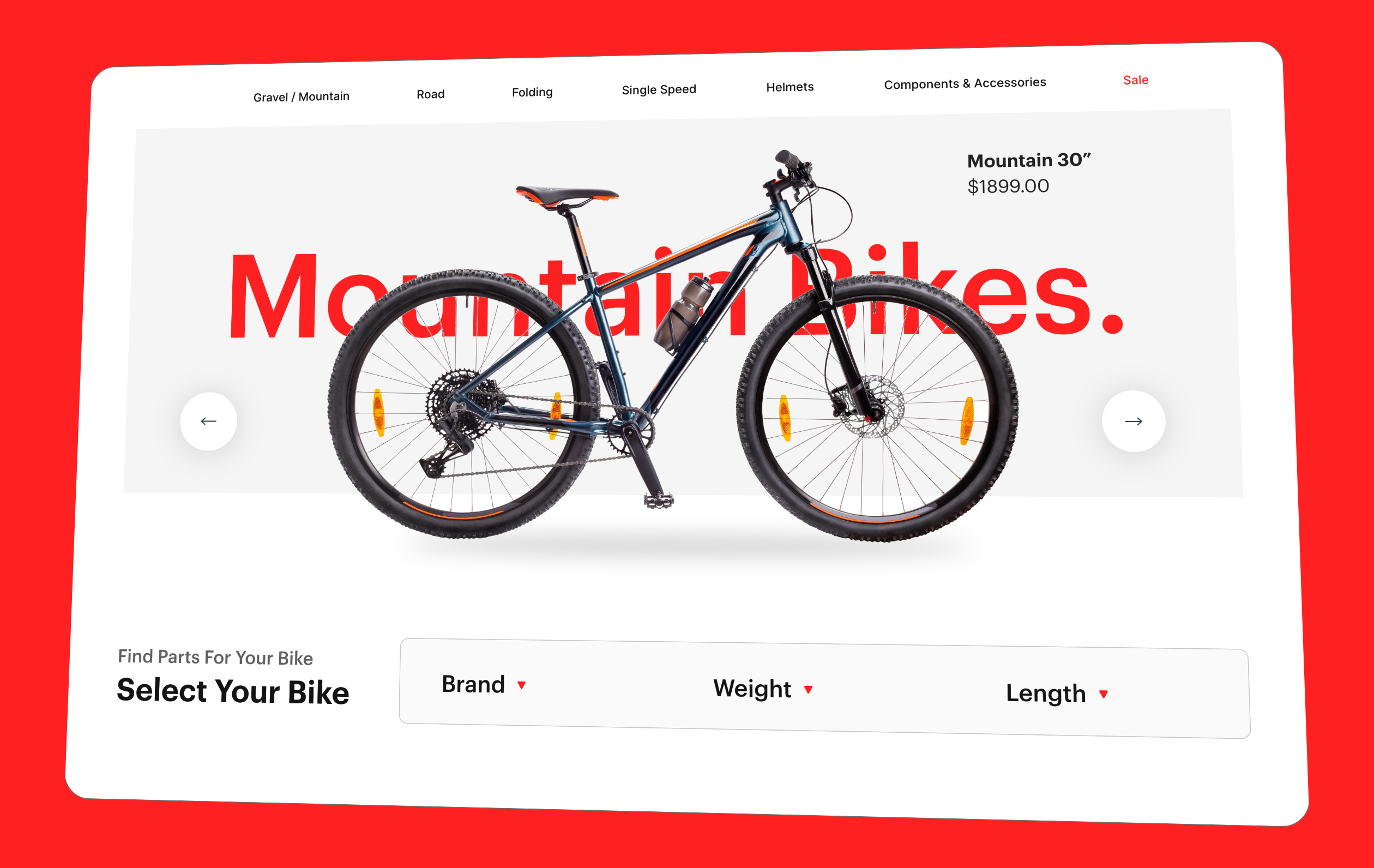
See why top ecommerce brands use Miva’s no-code platform to run
multiple stores, manage massive catalogs, and grow their revenue.
In case you haven’t heard, faceted navigation is awesome.
What is faceted navigation? All forms of "faceted searching” describe ecommerce website tools that online shoppers use to filter their search results by certain product criteria. While faceted search tools can be a game-changer for driving conversions, they need to be set up properly or they risk disrupting your site’s searchability.
Even if you aren’t already familiar with the term, you’ve probably come across some form of faceted search before, as it has rapidly become a key component of strong ecommerce SEO. In fact, faceted navigation SEO issues go hand-in-hand with a high quality customer experience—use it correctly and your customers will benefit just as much as your search rankings will.
In this article, we discuss what faceted search is, give you some of the best faceted search examples, outline the direct benefits, and then share the most important best practices for implementing some form of ecommerce faceted search on your website.
Faceted search (sometimes also referred to as faceted navigation) is a website feature that helps shoppers customize their search and sort through a catalog using a number of categories, filters, and facets.
Faceted search works by analyzing a set of products or pages based on the user’s criteria, excluding those that don’t match the criteria, and narrowing down the selection to the items that are relevant to the user’s search. Each faceted search result has its own unique URL.
This sounds simple enough, until you start to think about how many different search terms a typical shopper on your site might be using to narrow their results, multiplied by how many products you have which meet those criteria.
Imagine you are offering a selection of outdoor apparel for sale on your site. Faceted searching creates an array of potential product matches from user searches for those items, whether your customer is looking for “outdoor,” “hiking,” “Gore-Tex,” “trail runners,” “Nike,” “washable,” “medium,” etc. You get the idea. It’s like a concierge who makes sure their client gets exactly what they are looking for no matter how specific the request.
If you have a large and complex product catalog, faceted search helps your customers narrow down exactly what they’re looking for and makes their search results more relevant. Point blank, this helps improve the user experience on your site. Faceted browsing = more effective product browsing, and thus reduces the chances of visitors bouncing from your website.
Faceted navigation and faceted searching are for the most part synonyms, with one key difference. “Navigation” implies that detailed search terms can be used to find more than just product suggestions on an ecommerce site. Think about all of the types of content on your site, and then ask how a customer might find information that connects directly to what they are looking for. This is not limited to product pages. Faceted navigation SEO is the art of making your entire website part of the shopping experience, not just products and transactions.
Just about all of the content you present online can lead to positive customer experiences, more sales, higher customer lifetime value, and a brand relationship that lasts. Ecommerce faceted search which includes diverse types of content is a powerful pathway to these outcomes.
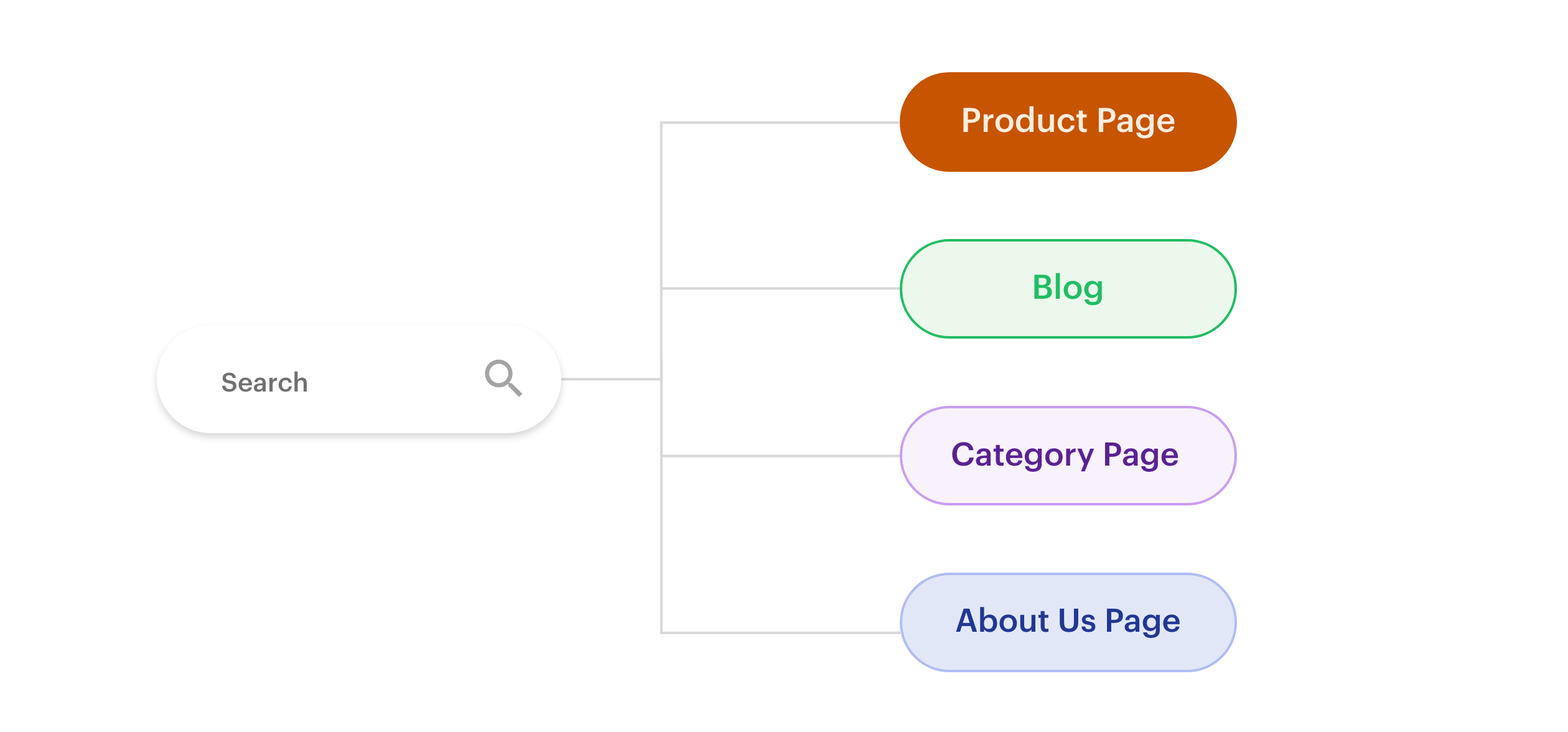
Using these tools for comprehensive navigation means that customers who enter detailed/conversational terms into search fields might also be directed to relevant content on the site such as a blog post, a category page, shipping info, and more. Even an About Us page can be indexed, and add to a customer’s decision to purchase. This demonstrates how valuable any kind of faceted browsing can be. It answer buyers’ questions in a way which connects them with content they are looking for, increases brand loyalty, and of course, boosts conversions. Sellers should look at any example of faceted search below and consider applying the same best practices when tagging other content throughout their site.
Filters are general categories predefined by your business, like clothing type, color, and size, and can only be applied one at a time. Facets are a subset of filtering, allowing users to apply multiple attributes at the same time to refine their search. With facets, specific categories can change based on the query—for example, certain filters will not display for certain products that they don’t apply to.
Let’s say you’re shopping for men’s shoes on a website. On a product listings page, you see different filters for shoes and decide to select red as the color, size 9, and running shoes—these are your search facets. With faceted search, you can go beyond broad categories and drill down to exactly the type of products that you need. For modern ecommerce shoppers, this type of detailed search is not just intuitive, it’s expected. Shoppers save time by asking for exactly what they want. In the example above, you wouldn’t want to waste time by viewing shoes which don’t come in your size.
If your faceted search is not set up properly and you have many attribute combinations and a high SKU count, you could find yourself with millions of pages housing every possible combination of product facets. This could lead to three main issues, including:
Faceted search isn’t an SEO problem in and of itself, but the pages required to make it work can be. The indexation and reputation issues associated with the kind of page bloat described above can lead to problems ranging from Google site penalties to lost search visibility. Applying faceted navigation best practices to your site can prevent future issues and resolve current problems. One such resolution saw a site’s traffic skyrocket after optimizing its faceted search setup.
There are several ways to keep your store optimized and crawlable while using faceted search. SEO thought leaders have suggested quite a few best practices for faceted navigation, but what’s best for your site depends on a number of important factors. Be sure to do your research and take your development resources into account before implementing any new faceted search SEO changes.
Applying best practices to your site’s faceted search can improve the user experience. A few general best practices include:

Noindex tags are used to exclude certain pages from searches. These tags are commonly employed during website development, when a page is live and accessible to anyone with the url, but not yet publicly announced. The same principle can apply to faceted navigation on your site—even though a particular product page is live, you might not want it included in search results. Perhaps you want to feature other products at different price points, and don’t want search traffic going to a product which might be less desirable to shoppers. Noindex tags can also be used to exclude product pages for items which are temporarily out of stock, so a site user will never be directed to items which are unavailable. Unfortunately, bots are not discouraged by noindex tags, and sites risk wasting their crawl budget and link equity by using them.
URL parameters are strings of automatically generated text which are appended to the end of a search query results page. A URL parameter looks like this:
https://www.example.com/search/imageresults.aspx?size=large&color=purple
The user-selected search parameters can be seen after the question mark in the above link.
The purpose of this extra text is to track the various elements of that user’s specific search right in the URL. URL parameters, a.k.a. query parameters, are similar to the commonly used marketing URL known as a “UTM”. Both serve the same purpose, allowing stores to attribute exactly how a site user arrived at a particular page. UTMs are used to attribute site traffic to a source like email or an external web page.
Similarly, URL parameters track which faceted browsing terms were searched for when compiling results. While these techniques can provide valuable insight for sellers, they both have been increasingly discouraged in faceted search best practices. The long and unsightly URLs which are produced can lower a user’s impression of an easy-to-navigate website. Also, Google also has released a set of recommended best practices around their use, which may make URL parameters too time-consuming to execute properly.
Ask yourself these three questions when performing a quality audit on your faceted search practices:
Limiting search results to actual products may sound like a good way to shorten the path to conversion, but if you aren’t adding facets to content throughout your site, you may be leaving money on the table. The best faceted search examples also incorporate other content like blogs, how-tos, and on-page social media integration—all are very valuable tools for encouraging purchases.
Fighting clutter is a key challenge for optimizing faceted search. For low-demand pages on your site, consider improving organic traffic with creative content and other SEO techniques before you add them to faceted search results.
Faceted browsing can be used to connect shoppers with the most desirable - or profitable - inventory in your catalog. Your job as the “concierge” of your products and content is to guide site users in a thoughtful way to the most engaging, relevant, and satisfying experience with your brand. Faceted searching is one more tool in your arsenal to achieve this.
Xtreme Diesel Performance
The Xtreme Diesel Performance website is a great example of faceted search and how effective it can be. Their website makes it easy for customers to sort through their high SKU catalog and find the auto parts they need with Year, Make, and Engine product filters. Using the filters, shoppers can run a faceted search defining exactly what we need.
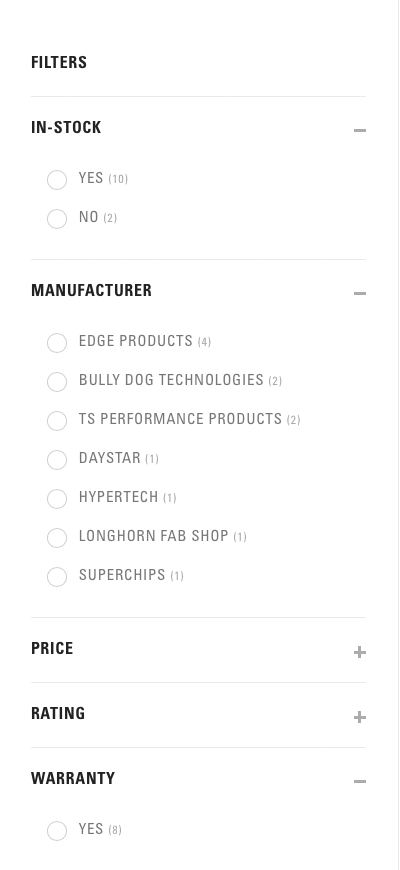
Enwild
Enwild offers a vast selection of backpacking, camping gear, outdoor apparel, and footwear. The retailer’s website features expansive filters that change based on the category the shopper is in, helping them narrow down to the products they’re looking for.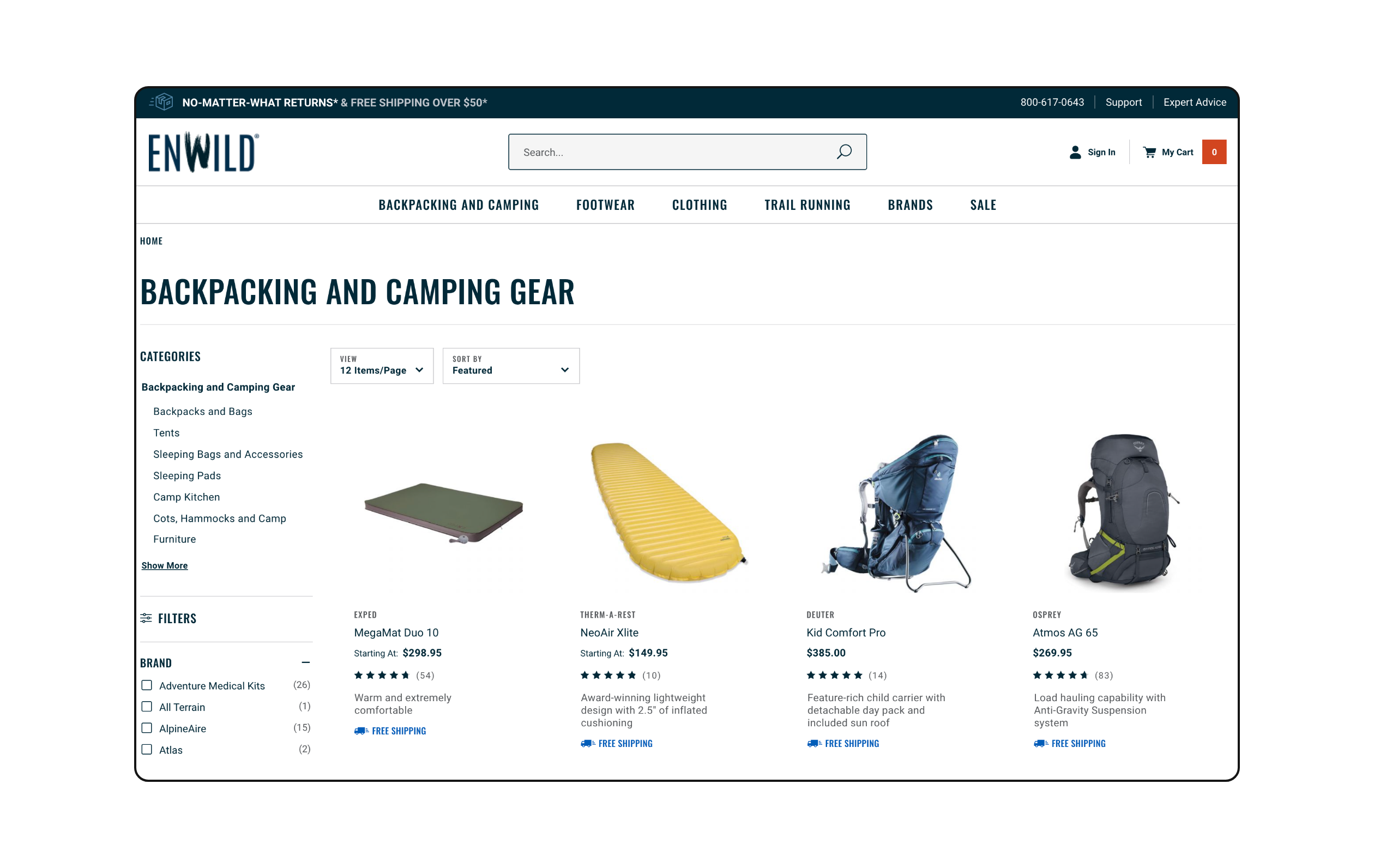
LAFCO New York
LAFCO New York’s website features has descriptive facets that help shoppers find the right fragrance and body care products by size, scent, color, and more.
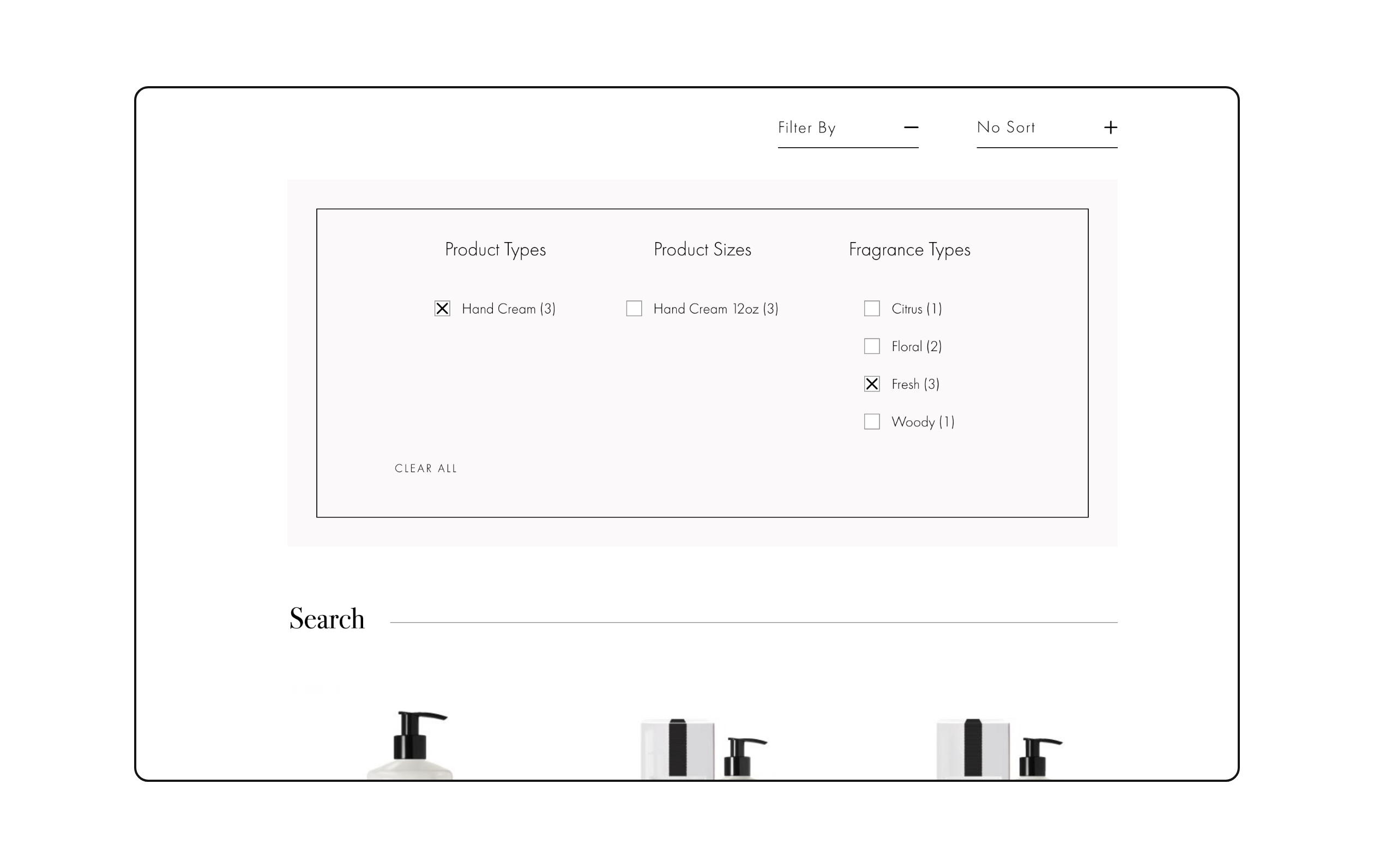
Online shoppers have grown accustomed to faceted search functionality and may be less inclined to do business with a store that doesn’t help them find exactly what they’re looking for. With the right setup, this essential functionality is often vital to a store’s success.
Looking to further improve your website performance? Take our free assessment to see how your online store measures up.
This blog was originally published on October 29, 2018 and updated on January 17, 2023.
Love it? Share it!
No worries, download the PDF version now and enjoy your reading later...
Download PDF Miva
Miva
Miva offers a flexible and adaptable ecommerce platform that evolves with businesses and allows them to drive sales, maximize average order value, cut overhead costs, and increase revenue. Miva has been helping businesses realize their ecommerce potential for over 20 years and empowering retail, wholesale, and direct-to-consumer sellers across all industries to transform their business through ecommerce.
Visit Website